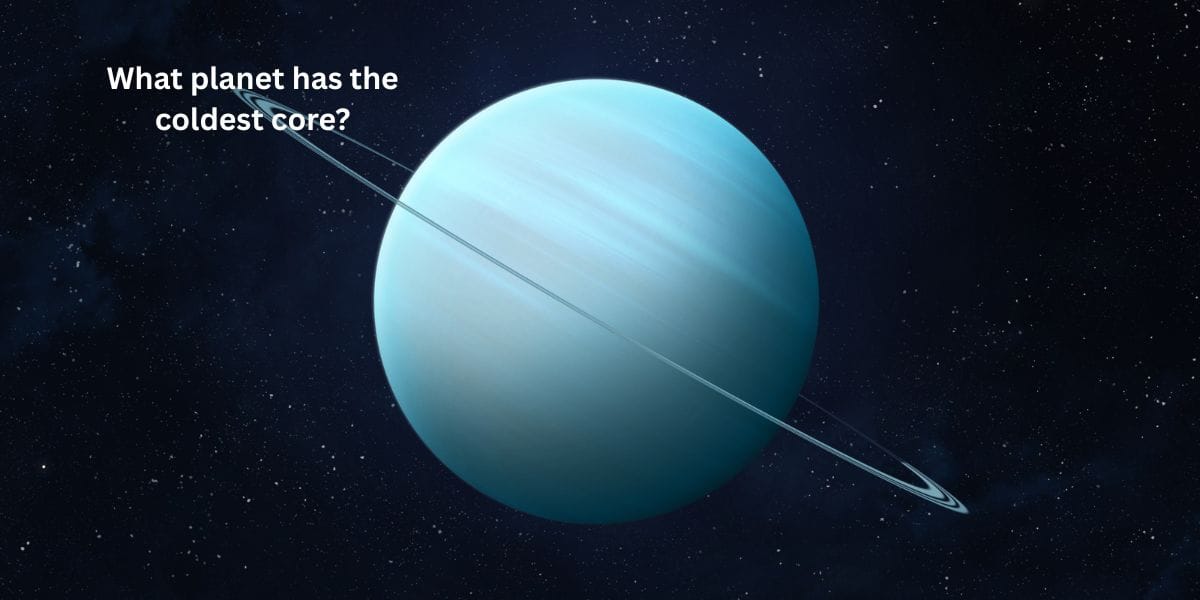
Deep beneath a planet’s surface lies a hidden world of extremes, scorching molten rock, swirling metallic oceans, or even frozen cores colder than the darkest depths of space. While Earth’s core burns as hot as the Sun’s surface, other planets like Uranus and Neptune harbor icy interiors that make them the solar system’s ultimate deep freezers. So which one takes the title of coldest?
Planets are like giant balls with different layers. Some have rocky cores, and others have icy or metallic centers. The temperature of a planet’s core depends on how far it is from the Sun and what it’s made of. So, which planet holds the record for the coldest core? Let’s find out!
What Is a Planet’s Core Made Of?
A planet’s core is its center. It can be made of rock, metal, or even ice. Earth’s core is mostly iron and nickel, and it’s extremely hot. But not all planets are the same.
- Rocky planets (like Earth and Mars) have solid or molten metal cores.
- Gas giants (like Jupiter and Saturn) may have rocky or metallic cores surrounded by thick gas.
- Ice giants (like Uranus and Neptune) have cores made of icy materials.
The coldest cores are usually found in planets far from the Sun, where temperatures drop extremely low.
Which Planet Has the Coldest Core?
The planet with the coldest core is Uranus.
Uranus is the seventh planet from the Sun and is known as an “ice giant.” Unlike Earth’s hot core, Uranus’s core is very cold. Scientists believe its center is a mix of water, ammonia, and methane ice—not burning metal like Earth’s.
Why Is Uranus’s Core So Cold?
- Distance from the Sun: Uranus is very far away, so it gets little heat.
- Slow internal heating: Unlike other planets, Uranus doesn’t generate much heat inside.
- Icy materials: Its core is made of frozen substances, not molten rock.
Even though Neptune is farther than Uranus, Neptune’s core is slightly warmer because it produces more internal heat.
How Cold Is Uranus’s Core?
Uranus’s core temperature is around 5,000°F (2,760°C), which sounds hot, but compared to other planets, it’s very cold.
- Earth’s core: 9,000°F (5,000°C)
- Jupiter’s core: 43,000°F (24,000°C)
- Uranus’s core: 5,000°F (2,760°C)
While 5,000°F is still hot, it’s much cooler than other planets’ cores. The outer layers of Uranus are even colder, reaching -371°F (-224°C)!
Could There Be an Even Colder Planet Core?
Some scientists think Pluto (a dwarf planet) might have an icy core, but it’s not a full-sized planet. Among the eight main planets, Uranus wins for the coldest core.
Future space missions might discover more about distant planets and their cores. Who knows—maybe another icy world will surprise us!
Conclusion
Uranus has the coldest core of all the planets in our solar system. Its icy center and far distance from the Sun keep it much cooler than Earth or Jupiter. Even Neptune, its twin ice giant, has a slightly warmer core.
📌 Frequently Asked Questions
Is Uranus the coldest planet?
Yes, Uranus is the coldest planet in our solar system. Its upper atmosphere reaches -371°F (-224°C), colder than Neptune.
Why is Neptune warmer than Uranus?
Neptune generates more internal heat from its core, making it slightly warmer than Uranus, even though it’s farther from the Sun.
What is the hottest planet core?
Jupiter has the hottest core, reaching up to 43,000°F (24,000°C) due to its massive size and strong internal pressure.
Does Pluto have a cold core?
Yes, Pluto’s core is likely made of ice and rock, making it extremely cold, but it’s not a major planet.
Can a planet’s core freeze completely?
No, because even cold cores like Uranus’s still have some heat. A completely frozen core would stop geological activity.
How do scientists measure planet core temperatures?
They use telescopes, space probes, and computer models to estimate temperatures based on heat radiation and magnetic fields.
Could life exist near a cold planetary core?
Probably not. Extreme cold and pressure make it impossible for life as we know it to survive near icy cores.
What color is Uranus’s core?
We can’t see the core directly, but if we could, it might look like a mix of white and blue because of its icy materials.
Will Uranus’s core ever get warmer?
No, unless something changes its orbit or internal structure, Uranus’s core will stay cold.
Are there planets outside our solar system with colder cores?
Possibly! Some exoplanets (planets outside our solar system) are even farther from their stars and could have colder cores than Uranus.
Leave a Reply